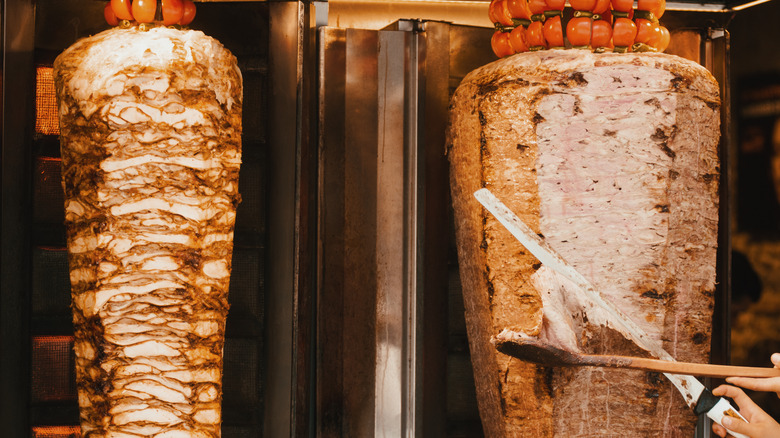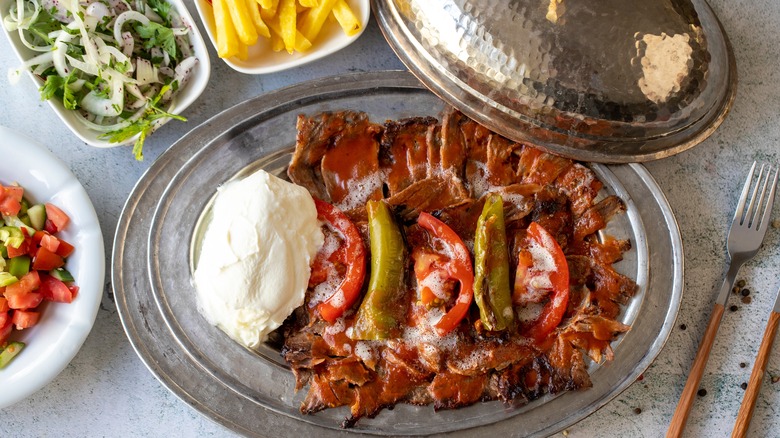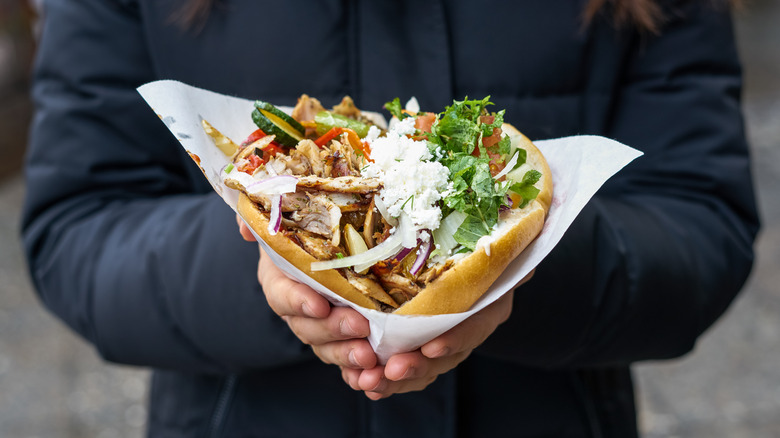How Giant Doner Kebabs Are Really Made
A typical European late-night meal, doner kebab is characterized by towering stacks of glistening and charred meat rotating leisurely on a vertical spit. Originating from Turkish tradition, this street food is known far and wide. The term doner kebab, derived from "dönmek" and "kebap" in Turkish, refers to the cooking method. "Dönmek" means to turn or rotate, while "kebap" simply refers to roasted meat.
Meats prepared on a vertical spit are a frequent sight when eating and drinking in Turkey. Lamb is most commonly used in traditional doner kebabs, though beef also stands as a popular option. Other proteins such as veal, chicken, turkey, and at times, some portion of ground meat, are also used. The chosen protein is sliced very thinly, pounded out further, and seasoned with spices like garlic, cumin, coriander, paprika, and oregano. This meat is speared on a large vertical skewer and slowly cooked as it rotates via electric, gas, or wood-fired heat. Once cooked, the meat is sliced off the spit and most often served in a pita bread wrap.
What is the history of doner kebabs?
The art of spit roasting can be traced back to the Ottoman Empire, and perhaps even earlier, as a method for cooking meats over an open fire. The exact time of the transition to a vertical rotisserie is hard to pin down but likely occurred around the 17th century. This shift in the meat's orientation allowed the rendered fat to drip back over the meat instead of into the fire, something that occurs when meat is roasted horizontally. Doner kebabs pioneered many other similar dishes around the world, like shawarma, gyro, and al pastor. This technique's popularization is attributed to Iskender Efendi in Bursa, Turkey, during the 1860s. Iskender kebab is still served today, laid on pide bread — a Turkish version of a leavened pita, topped with browned butter, spicy tomato sauce, yogurt, and grilled vegetables.
The doner kebab version most recognized today emerged in Germany in the early 1970s when an economic downturn forced new Turkish immigrants, who originally came as migrant laborers, to find other sources of income. Either Mehmet Aygün or Kadir Nurman is credited with selling the first doner kebabs, though the Association of Turkish Doner Manufacturers formally backed Kadir Nurman as the inventor in 2011. Although it's challenging to credit any single individual for inventing a sandwich, especially when it comes from a country known for its myriad bread-based dishes, the doner kebab stuck.
What makes a good doner kebab?
This satisfying and refreshing street food surged in popularity and is now a staple in Europe and the rest of the world. In traditional Turkish preparation, doner kebab is served on a plate with rice, fried potatoes, and salad, with pide on the side.
The German iteration of the doner kebab introduced convenience by enclosing the meat in a portable pita along with lettuce, tomato, cucumber, and red onion, not forgetting the hot sauce and garlic sauce. The expectation is for the meat to be tender, flavorful, and slightly charred. The vegetables should be crisp and fresh — a refreshing contrast to the juicy meat. Both the garlic sauce, adding a touch of creaminess, and the hot sauce, lending a dash of spice, should unify the flavors. The pita bread needs to be robust enough to hold the fillings but not overly doughy so that it eclipses the other ingredients and compromises the structure. Variations might also include fresh herbs, pickled vegetables, cabbage, or carrots.
Arguably, the most important aspect of the doner kebab experience is its availability when needed. Everyone has their favored doner kebab shop, likely near their preferred pub. Each preparation might vary slightly, but one thing is certain: the doner kebab is always there for you, and it's here to stay.



